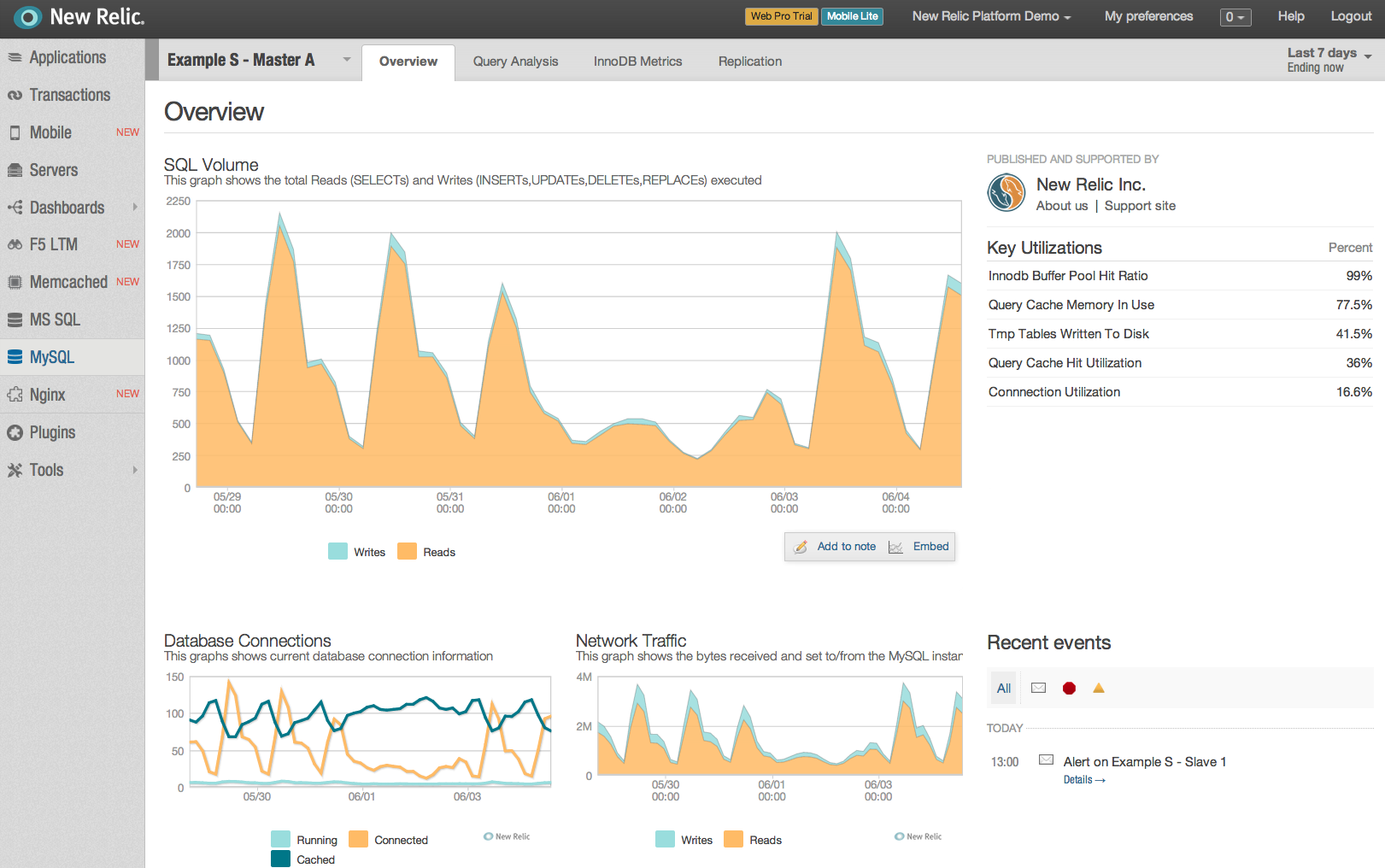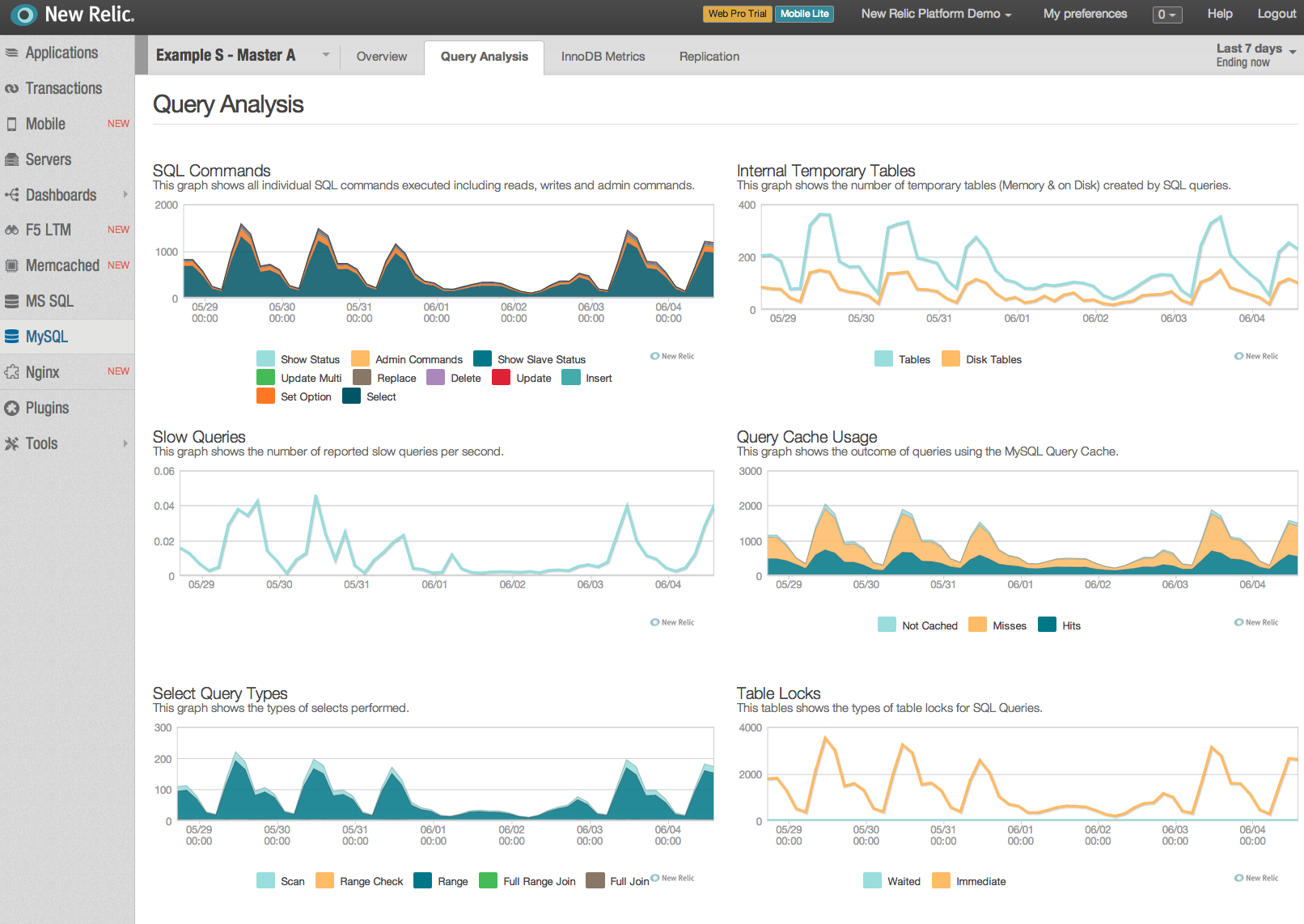By default the included Lua within MySQL proxy (0.8.3) does not include socket, necessary for getting microsecond granularity. To setup you have to install Lua and socket on the OS first:
For CentO5
$ sudo yum install lua lua-socket
For Ubuntu
$ sudo apt-get install lua5.1 liblua5.1-socket2
The following enables use within MySQL Proxy.
cp /usr/share/lua/5.1/socket.lua /path/to/mysqlproxy/lib/mysql-proxy/lua cp -r /usr/lib64/lua/5.1/socket /path/to/mysqlproxy/lib/mysql-proxy/lua cp -r /usr/lib64/lua/5.1/mime /path/to/mysqlproxy/lib/mysql-proxy/lua
My lua script can now use syntax similar to:
require 'socket'
function read_query( packet )
...
now=socket.gettime()
print( string.format("# %s.%3dn%s;n",os.date("%X",now),select(2,math.modf(now))*1000 , query))





